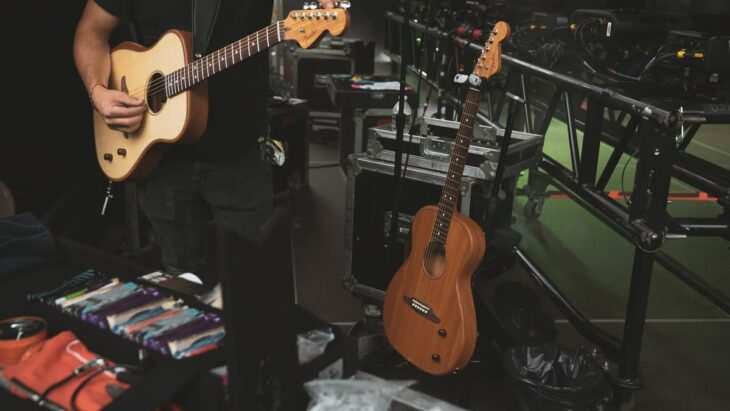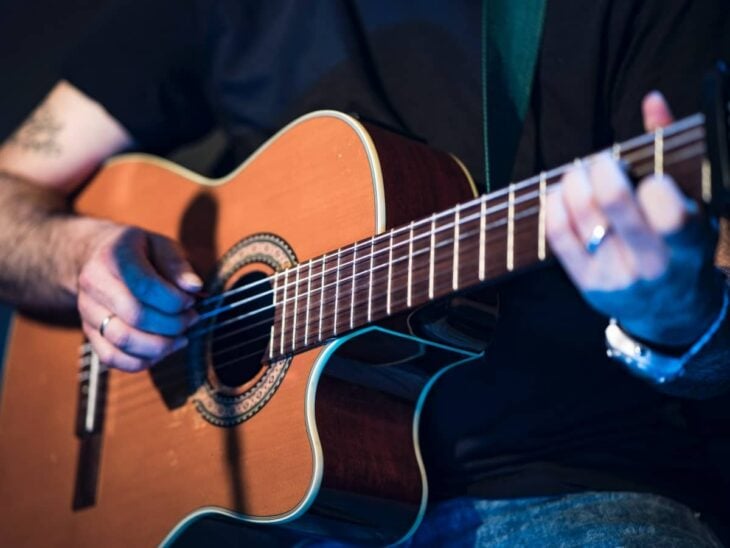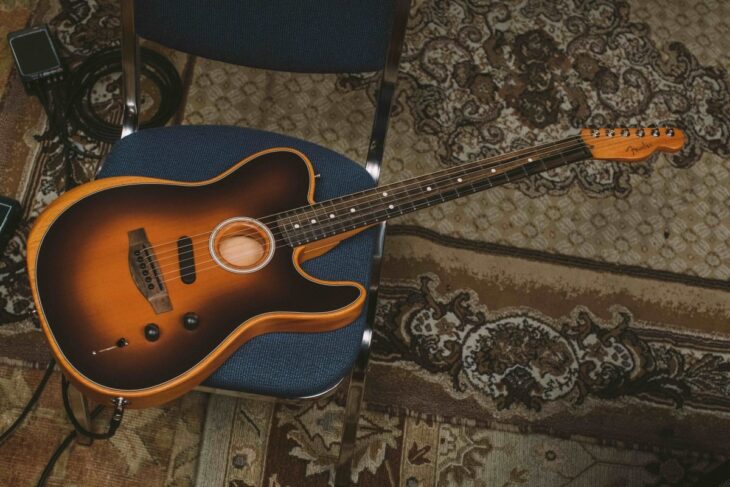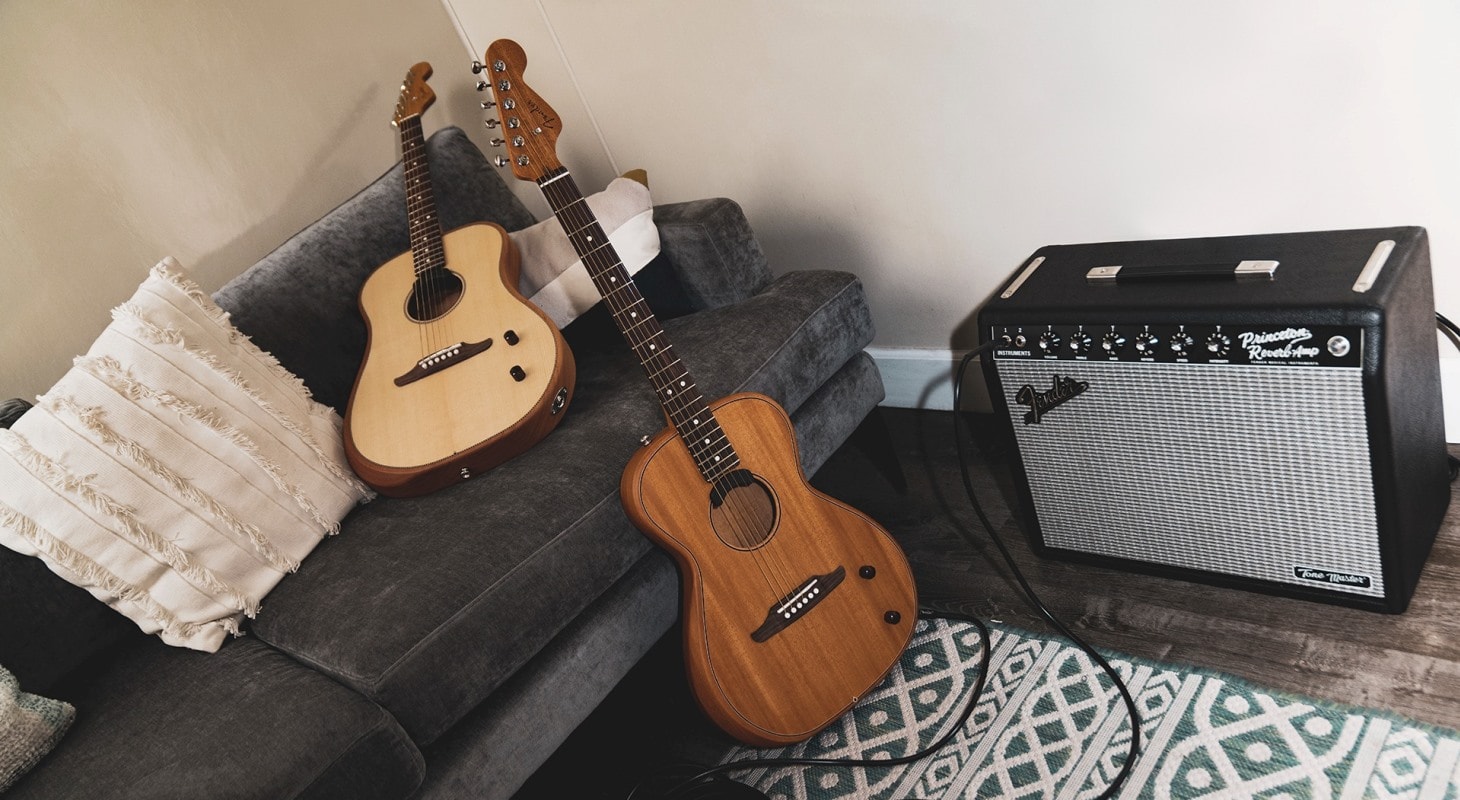Traditionally, the electric guitar world has moved faster and further than the acoustic guitar world. That was until Fender decided to step up and move things around… a lot. Indeed, since Godin came up with their MultiAC models I hadn’t seen so much acoustic innovation in the acoustic guitar world.
After the Acoustasonic success, Fender came up with a new guitar line that is a definite head-turner but, are they any good? Furthermore, is it a guitar line that will change your life as a player? Finally, and most importantly, should you get one?
Step on the gas pedal, because we’re taking the highway all the way to performance bliss.
Table of Contents
Meet The Highway Series
The Highway Series was announced in October 2023 in a statement that said “The Highway Series represents a bold step forward in the world of acoustic guitars, offering musicians a new avenue for sonic exploration and self-expression.”
Although Fender presented them as a revolutionary approach, it’s hard not to think of them as a close cousin to the Acoustasonic Series released in 2019. Yet, there are many differences that make the Highway Series a unique set of guitars ready for unique players.
Two Sizes, Two Finishes

The Highway Series is made in Ensenada, Mexico, at Fender facilities and comes in two sizes; parlor and dreadnought.
The parlor, as you might know, is one of the trendiest guitar shapes currently because most guitarists want a big tone with a small body. The dreadnought, invented by Martin over a hundred years ago, might be the most famous acoustic guitar shape of all time.
Each of these guitars is available with a solid spruce top or a solid mahogany top. Having a solid soundboard, despite the guitar body being carved into mahogany rather than having mahogany back and sides in a full-size acoustic body, makes a big difference.
This is because the soundboard is 80% of the guitar’s unplugged sound.
Unplugged Sounds and a New Bracing

Talking about the guitar’s unplugged sound, the moment you pick one of these up, what hits you first is just how light they are. They have that amazing matte, light finish on the neck and the rest of the body that makes them great-feeling guitars.
As I sat the parlor model on my lap, the first strums reminded me of my Baby Taylor but without the well-made low-end on that travel guitar. That said, playability-wise, the Baby Taylor is miles away from the Highway being much harder to play with a bulkier body and a not-so-friendly neck.
The volume on both guitars was quite similar, with the dark tone of the mahogany shining through in the shape of warmth and a nice, round tone that pushes you to try new things. Yes, let me assure you that your hands will push you to play licks, arpeggios, and arrangements that aren’t within your regular acoustic repertoire or scope.
Moving over to a spruce-top Highway dreadnought, I found the guitar sounded “bigger” and felt a little bulkier too. The snap and attack of the spruce top adds a welcome high-end to the sound that matches the lows coming from the mahogany body. With this model, I had the feeling that volume-wise, it was in the same alley as the Baby Taylor.
According to Fender, although they’re keeping the details of it quite a mystery still, much of the sound projection and tone comes from their proprietary “tapered floating X-bracing”.
Whatever that means, it works wonders in adding body and warmth to these guitars.
The Fishman Fluence Pickup
Although both guitars are quite nice as acoustic instruments, they’re not loud enough for an ensemble, just nice to play on your own or accompany a singer.
The true wonders of this line come when plugged in.
In case you’re not familiar with them, Fishman has been making a groundbreaking line of pickups for electric guitars called “Fluence”. These pickups have revolutionized the scene and are played by players as distinct and amazing as Greg Koch and Tosin Abasi.
The collaboration between Fishman and Fender has been going on for a long time and is another of the shared aspects between the Highway Series and the Acoustasonic Series. Both guitar lines feature specific Fishman-designed electronics (more on that later).
The center of the system is a magnetic pickup that resembles tonally a Baggs M1 or a Fishman Rare Earth.

Yet, it’s located so close to the neck in such mahogany-rich guitars that the warmth factor is very present. That said, adding the spruce top and bronze strings to the equation, what you have is a guitar that sounds like a record every time you plug it in.
Furthermore, there are no menus, no other controls than two wooden knobs on the body, and no possibilities of fine-tuning a sound that Fender and Fishman think it’s perfect. I can’t say I disagree with them, especially when going through some fancy PA speakers or good computer monitors.
What’s the Contour Knob?
To begin clarifying what the blend knob does I have to say that Fender kept it all on the analog side of things and there are no IRs powering anything on this guitar’s sound. Therefore, the impressive feedback resistance of the Fishman Core pickup is something worth noting.
The two knobs that handle the entire system are a regular volume knob as you would expect to have in an acoustic guitar and a “contour” knob that allows you to move between two different EQ curves.
On one side, you have a fuller, warmer sound that enhances the guitar’s low-end and mahogany construction. On the other, there’s a bump in the mids and some more highs which resemble the natural sound of a parlor guitar.
Again, this is not IR, the Highway Series doesn’t replicate any other guitar but does its own thing analogically by applying an EQ curve instead of having a regular tone knob.
The good thing about this contour knob is that it works as a blend knob allowing you to find a sweet spot to leave your sound dialed in and make adjustments depending on the PA, the venue, or… well… your mood at that gig.
The Immediate Predecessor, The Acoustasonic Series
In Winter NAMM 2019, Fender unveiled to the eyes of the world a brand-new concept they had been working on for a long time. It was a guitar line that was going to solve all the problems acoustic guitar players have when going on stage to play live.
Well, after seeing even legendary purist Jack White play one on stage, we can say that the Acoustasonic Series made its mark on acoustic guitar players giving them something to work with in the real world.
Later, Fender came out with the more affordable, Mexican-made Acoustasonic Player guitars to aim at the same market with a more affordable instrument with not-so-spectacular specs.
What’s the Difference with the Acoustasonic Series?
There’s a big difference between these guitars.
The Acoustasonic is aimed at the pro musician who plays live a lot going from acoustic to electric or the session musician who needs plenty of different tones to solve everything with the same instrument.

The Acoustasonic Player sports much-simplified electronics and aims at musicians who need a guitar to pivot between electric and acoustic but can’t afford the price tag of the USA-made one.
So, if those niches are covered, where is the Highway Series sitting in the Fender acoustic line?
Well, in my opinion, the Highway Series moves in a different territory giving the player a quintessential acoustic shape, and a great acoustic sound without any of the electric guitar appointments that the Acoustasonic has.
In other words, I think Fender wants to capture the attention of those who want to have a hassle-free acoustic tone with electric guitar playability and comfort. The Acoustasonic, on the other hand, is closer to an electrical guitar with acoustic capabilities than to a revolutionary hassle-free acoustic instrument.
Who’s this Guitar for?
Let me say that I’m the happy owner of a Martin D15M and a Baby Taylor. Both are made entirely out of mahogany. Why is this important? Well, because I have a full-size dreadnought and parlor guitars to compare these Fenders to.
I have to say they’re nowhere near the unplugged sound of my Martin, but they are much more “giggable” because of the contoured body, lighter weight, and rugged construction. They definitely sound better when plugged in. The same happens with the parlor-sized guitar.
So, I think these guitars are great for:
- Gigging musicians who need a consistent tone with no feedback hassles day after day. Also, these guitars can deliver acoustic tones with none of the fragility issues regular acoustics have when moved around daily.
- Guitarists who pivot between electric and acoustic a lot and prefer having that thin, maneuverable, slick electric neck to perform. In my opinion, regular Fender headstocks don’t look good on acoustic guitars, but for the Highway Series, I think it’s the right choice.
- Home studio owners who want to have silent, night-time sessions can have a great plugged sound coming from the Highway Series with none of the hassles of putting microphones against the guitar and having city noise on their recordings.

